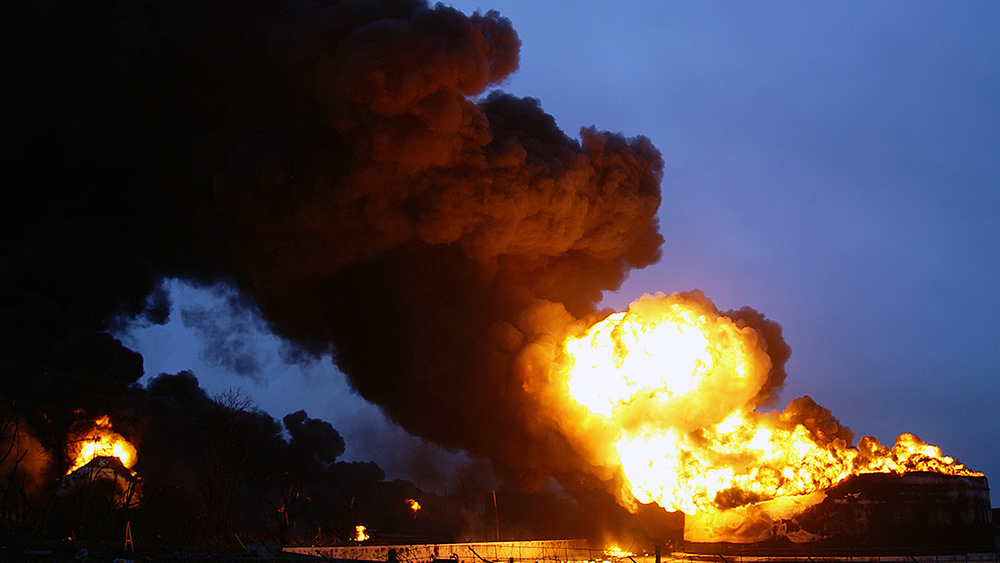
Global supply chains have already been impacted by China's six-day lockdown, supposedly to mitigate the spread of the Wuhan coronavirus (COVID-19). The world's largest container shipping company by capacity, A.P. Møller-Maersk A/S (Maersk), already told their clients that China's zero-tolerance approach against the virus has already produced new supply chain issues and logistical delays.
"While manufacturing also takes place in other parts of the country, these delays will still affect output, though not drastically," the company said in a memo to its clients. They also activated their contingency plans in China following the lockdown of Shenzhen, as the disruption already shuttered factories and brought the transportation industry to a halt.
China's lockdown will show severe consequences elsewhere because the economic giant accounts for a third of the world's total manufacturing capacity. Shenzhen alone is a top manufacturing hub in China and its port is one of the largest. Anyone who has ever purchased an electric appliance or gadget on Amazon is likely to find that it was made in China or shipped out of the same region in a container ship.
Supply chain analysis research firm Project44 Senior Vice President Adam Compain said the number of vessels waiting at some Chinese ports has increased 28.5 percent since the lockdowns. These vessels were waiting outside of the port of Yantian, a major export port to Europe and North America. (Related: Supply chain crisis continues amidst COVID-19 pandemic, with no end in sight.)
Yantian, which is also in the same region as Shenzhen, also experienced limited operations due to COVID outbreaks and contributed to the significant delivery delays of products to the United States.
Steven Lynch, the managing director of the British Chamber of Commerce China, said it is a double-edged sword. The country comes down very quickly, causing huge disruptions in the supply chain, but they also get things back to normal just as fast. "We've seen these lockdowns before so companies have put in a robust supply chain management," Lynch said.
President Xi Jinping pledged to soften the economic impact of fighting the coronavirus. The latest lockdown of multiple cities and tens of millions of people and factories has a spillover effect at the worst possible time with the Russia-Ukraine conflict and inflation making supply chain issues even worse. (Related: Supply chain crisis could push global economic recovery off course.)
Supply chain advisories left to forwarding community as unpredictable government measures continue
In the absence of information from carriers, it has been left to the forwarding community to send out advisories regarding the supply chain issues. Seko Logistics said its staff would be working from home. Its employees had actually been working from home in shifts since the previous week to "ensure minimal impact to operations in case of a lockdown."
Lars Jensen of Vespucci Maritime said it should be kept in mind that when Yantian was shut down due to COVID in 2021, the disruptive impact on cargo flows was roughly twice the size of the blockage of the Suez Canal.
Moreover, the shutdown did not extend to the city, which is home to big companies such as Huawei, Foxconn (which manufactures the iPhone) and others. Therefore, the impact of the lockdown is likely to be greater and may potentially last longer.
Other concerns also include China's strategy for COVID elimination to extend to other mainland cities, despite the mild symptoms of the omicron variant.
Supply chains are beginning to show signs of returning to some form of normalization, and prior to this latest disruption, carriers were already predicting that schedule reliability and rates would improve somewhat.
However, to some foreign investors, the outbreak itself may be less of a problem compared to the unpredictability of government measures. The chairman of the British Chamber of Commerce in China, Julian MacCormac, said the business risk in China is now higher than at any time since the late spring of 2020.
Follow SupplyChainWarning.com for more updates on supply chain issues and more.
Watch the video below for more information on the effects of lockdowns in China.
This video is from the High Hopes channel on Brighteon.com.
More related stories:
World braces for renewed supply chain crisis as COVID outbreaks shut down highly vaccinated China.
Global supply chain crisis expected to last another TWO YEARS.
Supply chain crisis threatens lucrative holiday sales of many companies.
Shipping costs to the US surge as supply chain crisis continues to accelerate.
Biden's economic agenda, COVID policies make supply chain crisis worse.
Sources include:
Please contact us for more information.


















